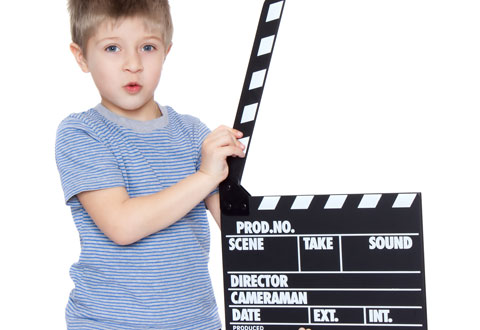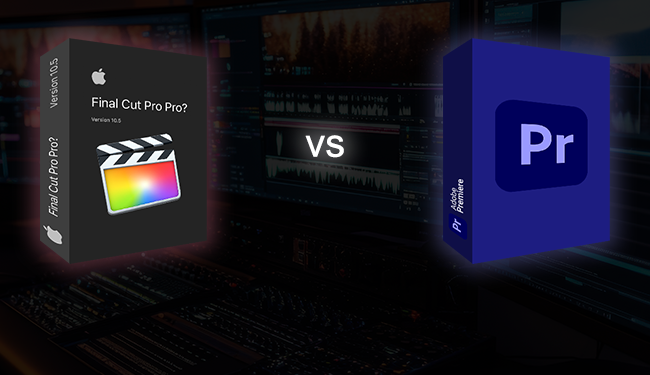Video is all around us. Whether on social media, on video sites like YouTube or Vimeo, or on television, videos have the power to entertain, inform, and move us. If you want to dive into the world of video production you may find yourself quickly overwhelmed. You’ve got an idea, but how to present it in a compelling and entertaining fashion?
Like any artistic pursuit, the craft of video production requires practice, study, and dedication to rise above the level of the unschooled amateur. Sure, you can learn as you go, but a little planning and study can help you avoid commonly seen mistakes that distinguish the work of a rookie from a veteran video producer. Here are some video production tips that will help you step off on the right foot towards making the best possible videos.
Study Videos You Like
If you listen to interviews with great film directors, they almost always cite the work of other directors. Even the most innovative auteur can’t create something completely new. They study the works of others and borrow techniques and ideas to present their own personal vision. The same ethos should apply to you.
What kind of video are you planning on making – a vacation video, a wedding video, or a mini-documentary? Go online and find examples of the kind of video you’re looking to produce. Watch a lot of different videos and make notes about what you like about them. Does the overall construction of some examples appeal to you? Do you like the camera angles employed by other video makers? You don’t want to copy the videos you like shot-by-shot, but incorporate the features and techniques you like into the plan for your video.
Storyboard Your Video
Many great directors and videographers swear by storyboarding. Storyboards let them envision the end product they want to produce before they begin the actual shooting. A storyboard doesn’t have to be elaborate – rough sketches or even simple descriptions will let you envision your work as a whole. With your vision down on paper, you can critically examine the pace and flow of the video, and begin thinking about the kind of shots you’re going to need to create the finished product.
Plan Before You Shoot
Your storyboard was the first step of your planning. Now you need to go into more detail. Imagine, for instance, that you want to make a video about a backpacking trip. If possible, scout locations or read trail descriptions so you can plan your shooting around scenic highlights. You may also want to shoot some scenes, like packing your gear, well before the actual trip. If you’re planning on using a voiceover or interviews, you can do much of this work ahead of time as well.
Different types of video shoots may require different types of gear. If you’re out in the woods, or at any location where power won’t be readily accessible, you’ll need to plan for necessities like extra batteries. Think about how much footage you’ll need and be sure to take enough memory with you for your digital cameras.
Get Familiar with Your Gear
A painter has his brushes, a sculptor her chisel. You have your camera, sound gear, and editing software. It’s important for you to get familiar with how all your gear works before you start producing videos. At the very least, you’ll save a lot of time that might be wasted in the field trying to figure out how to use your gear properly. And while learning about your gear you may discover it has capabilities you weren’t aware of.
There’s no better place to start than by reading the manual. But you’ll often find lots of great information about specific pieces of gear online – in articles, blog posts, and videos. Think about some of the shots you’ll be looking to record and get familiar with the settings on your camera that will yield the best results. Try a few dry runs with different settings to see what works best.
At the other end of your production, you’ll be relying on your video editing software to create the final product. Nothing can be more frustrating than spending hours learning how to use the software when you’re anxious to finish your video. Take the time to learn how to use the software by taking on some small projects first. And if you see techniques that you like in the videos you’ve studied, try to replicate them. You’ll find plenty of how-to articles and videos online, so seek them out and take advantage of them.
Adapt To Your Environment
Be aware of the environment around you when recording your footage. In particular, if you’re shooting outside, note the location of the sun. If you want to capture the expression in your subject’s face or are recording a scene with dialogue, avoid having the sun behind the subject unless you have lights to fill in the shadows.
Be flexible in looking for the best time of day to get shots. If you’re shooting an outdoor wedding video, for example, you may want establishing shots of the venue. Consider shooting those shots on a different day when the light is at its best, such as in the “golden hours” right after dawn and just before sunset.
Even the best laid plans don’t always work out. Be flexible and be prepared to move on if a shot isn’t panning out the way you hoped it would. You can always work around it and come back to pick up the shot later.
Practice!
Sure it’s a cliché, but it’s true – practice does make perfect. Your skill as a video producer will increase as you learn more and get a chance to employ your skills. Always search for opportunities to hone your craft, even if the end product isn’t going to be as expects, you have Video Caddy to edit your videos to professional level. The skills you learn in practice will make you more well-rounded and provide you with insights into how to make every video your best ever.
– Video Caddy
Video Caddy




